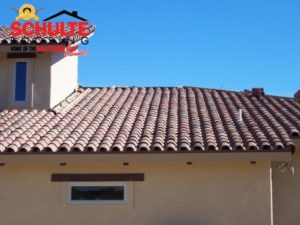In a report by the United States Department of Energy (DOE), the primary reason for an increase in household power consumption is the use of central air-conditioning. This accounts for approximately 31 percent of the total energy consumed by every household. In fact, heating, ventilation, and air-conditioning (HVAC) is the major contributor to increased household utility expenses. National domestic power consumption rises during the summer due to the use of air-conditioning. One common factor that can be associated with this abrupt energy amplification is the absorption of heat by the home during sunny days.
air-conditioning. This accounts for approximately 31 percent of the total energy consumed by every household. In fact, heating, ventilation, and air-conditioning (HVAC) is the major contributor to increased household utility expenses. National domestic power consumption rises during the summer due to the use of air-conditioning. One common factor that can be associated with this abrupt energy amplification is the absorption of heat by the home during sunny days.
When the roof absorbs radiant heat, that high temperature is transferred to the attic space which in turn causes the room temperature below the attic to increase. It is important for the warmth from the sun to be radiated back into the atmosphere to ultimately lower the room temperature. In short, every homeowner with a household air-conditioning unit should have radiant barriers installed to decrease high temperatures during the summer months. Roof company Houston contractors suggest that every homeowner should have at least some basic knowledge regarding these heat-reflecting obstacles.
Household Temperature Controller
Radiant barriers are types of aluminum foil installed in buildings to prevent the transference of reflective warmth between heat-radiating and heat-absorbing surfaces. This should help every household increase their energy savings during the summer. This material will block the infra-red energy emitted from the hot roof to keep the attic space cooler, therefore reducing the amount of radiant warmth in the rooms below the attic. There are several reflective barriers available on the market, including reflective chips, foil, and paint coatings.
Function
There are two factors that are involved in how radiant barriers function: emissivity and reflectivity. These two factors are the most important properties that make their obstructing capability more effective.
- Emissivity (0-1) – This is also known as ’emittance’. It is the ability of the radiant barriers to emit thermal energy from hot surfaces.
- Reflectivity (0-9) – This is also known as ‘reflectance’. This is the capacity of the surface to reflect emitted heat from a hot surface.
The two properties of this material are essential in order to reduce energy consumption during the summer. These reflective barriers have low emissivity and high reflectivity.
During the summer, heat is absorbed in the roofing material when the sun strikes the roof. It will move into the attic surface by means of conduction and convection. At this point, the warmth will then be transferred from the attic surfaces to cooler surfaces (air ducts and attic floors) through radiation. If radiant barriers are installed, the increased temperature will be radiated back to the outside of the roof. Without such obstructions, the radiated heat will be absorbed by the interior surfaces which will hold the warmth, resulting in increased temperature levels. Local governments encourage every household to use radiant barriers to decrease energy consumption during hot sunny days.
Installation
The effectiveness and performance of radiant barriers is very dependent on how the material is installed by a certified roof company Houston contractor. Proper installation of these reflective obstacles can reflect heat by 97 percent; this provides homeowners with the opportunity to effectively reduce the electric consumption by the use of central air-conditioning.
Radiant barrier systems are different from roofing insulation which only slows down heat transfer. In contrast, reflective barrier systems not only slow down this transfer; they directly reflect the increased temperatures caused by the sun’s radiation. Roofing insulation does not have the capacity to stop this type of heat; therefore, obstructions must be installed to reflect these high temperatures. As an important part of the entire roofing system, it is essential for every homeowner to learn and gain valuable information about radiant barriers!
